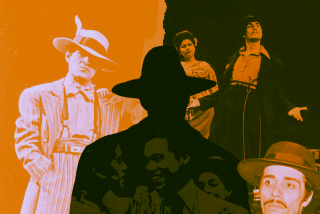Discovery That Undermines Stereotype
- Share via
At the time of the Spanish conquest, Mexico City--then called Tenochtitlan--was a larger city than Madrid. The native society upon which New Spain was imposed was far more populous and technically advanced than the one upon which New England was imposed. Partly out of choice, partly out of necessity, New Spain never confined its native population in reservations but intermarried and created the mestizo population that Mexicans have been, to this day, proud to call la raza.
In time, New England became the United States, New Spain became Mexico and--after the Mexican American War--northern Mexico became a part of the United States. In the cultural mingling that followed that war, Americans tended to assign Mexicans and Mexican culture to the same spot in their own society and their own mental universe that the North American Indians occupied. When they looked south of their new southern border or toward the southwest quadrant of their own new national map, they saw only an indigenous folk culture, never a rival European high culture.
The discovery of three splendid baroque musical scores at the San Fernando Mission, reported on last week in The Times, is a reminder that in some ways Spain was more successful than England in exporting its high culture to the New World. The relative fusion of the immigrant Spanish and the indigenous Amer- indian populations allowed the immigrants to assimilate in various ways--most strikingly, perhaps, in cuisine. On the other hand, the same fusion prevented the immigrants’ culture from remaining mere colonialism. Spain is more than an influence in Mexico: It is half of an identity.
The composer himself, Ignacio de Jerusalem, was an immigrant from Italy long resident in Mexico City. As any lover of polyphony who has heard the Chanticleer CD “Mexican Baroque” can testify, Ignacio’s music is as vigorous as it is elegant, no mere musical curiosity but a permanent addition to the international classical repertory.
His rediscovered scores come as a salutary double reminder. They remind us, first, that the inherited culture of the United States is by no means entirely English. They remind us, second, that the Mexican component in that culture is by no means entirely native.
More to Read
Sign up for Essential California
The most important California stories and recommendations in your inbox every morning.
You may occasionally receive promotional content from the Los Angeles Times.













